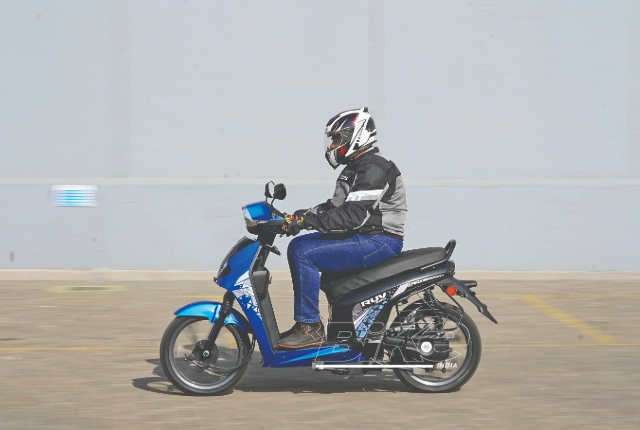
The BGauss RUV350 is born out of the idea of an utility vehicle in the two-wheeler market. We try to determine how close it comes to that design brief.
Story: Sayantan De
Photography: Sanjay Raikar
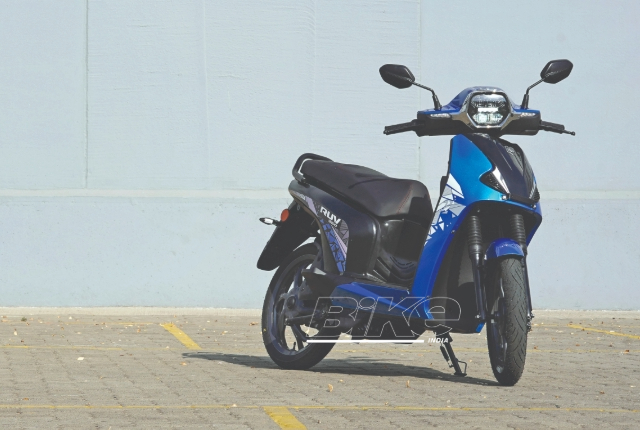
Convergence, the merging of different technologies into one, is something we see around us all the time. Just a decade ago we had a plethora of compact cameras which are now all but extinct thanks to mobile phones making giant leaps in photography. The mobile phone in fact has replaced a bunch of gadgets which were cutting edge in the 90s, such as a calculator, a digital diary, a daily planner (that last one is not exactly 90s tech, but still). The BGauss RUV350 was born out of the idea of combining the large-wheel stability of a motorcycle with the utility of a scooter. We rode it around the closed roads of the BGauss factory to test their claim.
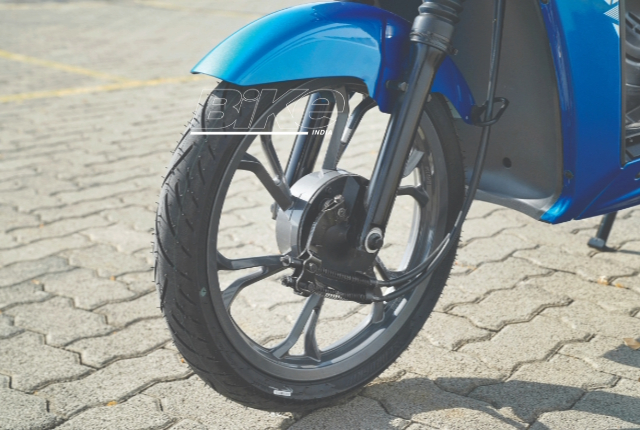
BGauss aim to achieve this convergence primarily through the usage of 16-inch wheels, not really seen before in the Indian electric scooter market except the Okinawa OKHI 90, aside from BGauss’ own D15. The RUV350 is quite different from the D15 though, and it seems like excluding the wheel design which they both share, there’s not much that is common between the two. One of the aspects of the design that strikes me as odd is the large gap between the rear wheel and the rear part of the body of the scooter, but it is a minor one. What is really eye-catching at the rear third of the vehicle is the single-sided swingarm which has the electric motor integrated, thus creating an interesting stance. Overall, the BGauss RUV350 strikes a reasonably handsome pose.
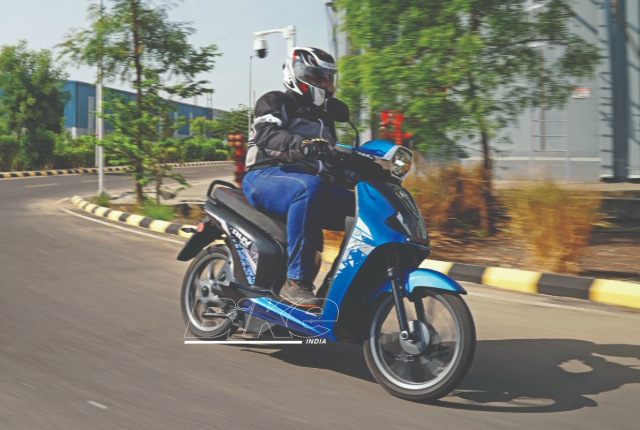
Once on the bike, the riding position felt natural for my height (180 cm). The tall handlebar definitely helps in this regard, and I feel that a little bit more space on the floorboards would definitely make the already-comfortable riding position even more so. One of the clever solutions on the RUV350 is the separate storage area for the charger, which is located under the floorboard. However, it will only work with the 500-watt and the 840-watt chargers, and not with the super-quick 1,350-watt charger—more on this later. The underseat storage is woefully small, though with just 15 litres of capacity on the Max trim, which isn’t enough for a full-face helmet. The EX trim with a smaller battery will have 22 litres of storage.
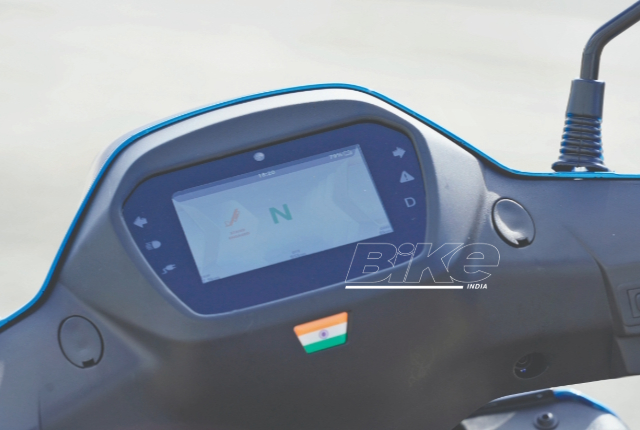
Feature-wise, the BGauss RUV350 comes with LED lighting all-around, a five-inch TFT display, three riding modes, hill hold, fall detection, regenerative braking and, interestingly, cruise control. Not something we see on scooters everyday. However, the display control are a combination of the switches on the right side used in conjunction with the left brake lever, and takes some time to get used to. Couple of other thoughtful features include vacation mode, where you flip a switch located under the seat to stop draining the battery if the scooter is going to be parked for a long duration (read more than a month); there’s also a 12-volt system which runs all the electrical subsystems until the motor is engaged, at which point the 48-volt system takes over. The seat has a soft close feature and a channel for the charging cable to pass through so you can lock the seat and secure your charger when charging at a public spot. This last one is a supremely useful feature, and I have a feeling it will soon be adopted by other EV manufacturers as well.
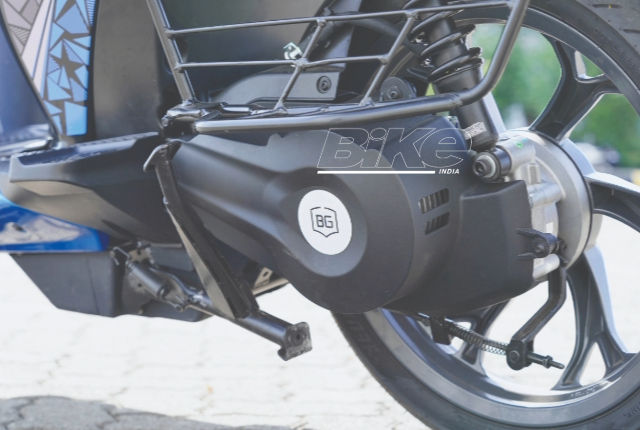
There’s a 3.5-kW (4.7 hp) motor which draws current from a 3.0-kWh battery on the Max trim. There will be an EX trim as well, with a 2.3-kWh battery. The ARAI-rated range is 135 km, and BGauss claim a real-world range of 120 km. The battery is LFP type, with air cooling via channels on the bodywork. Charging time for 0 to 80 per cent SOC is 5 hours and 25 minutes on the 500-W charger, 2 hours and 40 minutes on the 840-W charger, and a blazing 1 hour and 55 minutes on the 1,350-W charger. However, for now the dedicated floorboard storage can only hold the first two chargers, and not the latter which means if one decides to carry it with them, they will have to sacrifice space on the already rather small cargo area.
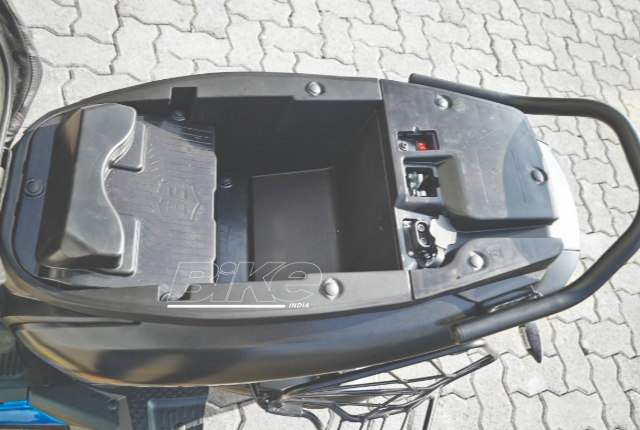
In Sport mode, the 0-40 km/h acceleration is 5.8 seconds and the claimed top speed is 75 km/h. Despite the higher moment of inertia from the larger wheels, the bike picks up speed effortlessly, as long as you are not in the Eco mode, which lowers the performance down a bit too much (though we suspect most people use Eco mode on their EVs most of the time). There’s a reverse mode as well, in which the top speed is electronically limited to four km/h.
The 16-inch wheels, thanks to their large size, lend the RUV350 excellent stability on both straight roads and through the corners, despite being rather narrow in section width (the brand is TVS Eurogrip Bee Connect in case you’re wondering), with a 80/80 on the front and a 90/80 on the rear. We rode on almost glass-smooth asphalt, but there were some areas with paving blocks and a few rather large speed breakers, and the scooter was able to handle these sections without any issues, so the ride quality should be pretty good too. One thing that does need to be improved is the braking, as the 130-mm drums at both ends do not inspire confidence.
The BGauss RUV350 in Max trim is priced at Rs 1.35 lakh. Considering the price point, the BGauss RUV350 offers something quite different than what’s available in the market, particularly considering the cost of the other two 16-inch wheel-equipped electric scooters, both of which are significantly higher. It also packs in a lot of thoughtful features, such as the vacation mode and the ability to lock the charger in the storage while charging, which we feel are things that really add value. However, the storage space for the Max trim is a bit too compromised, and that’s where it is a bit too close to a motorcycle. The dial needs to shift a bit more towards the scooter-end of the equation in terms of storage capacity, and it will become a much more viable option in the market, while retaining its USP.


Leave a Reply